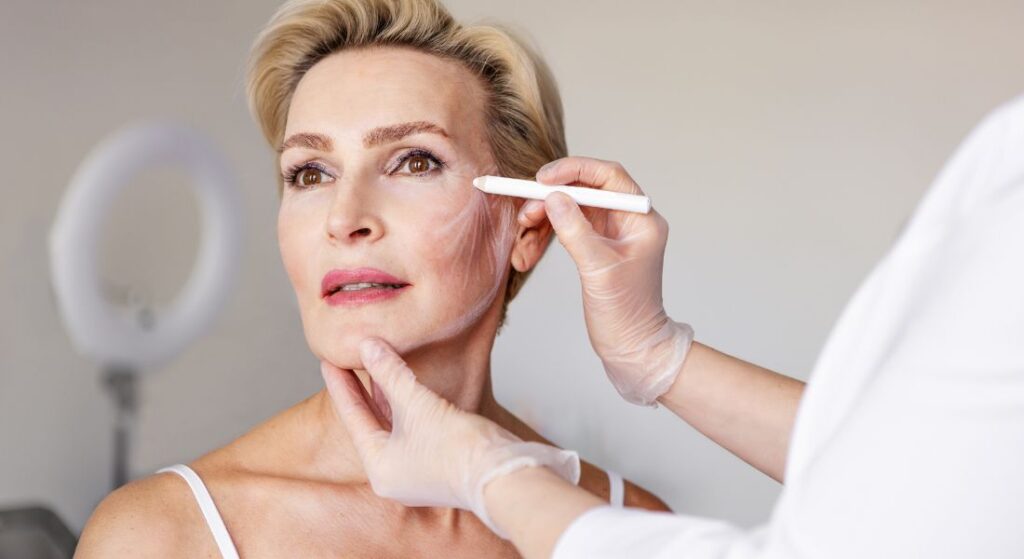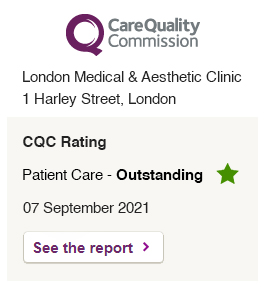
If you’ve been searching for ways to restore youthful definition and firmness to your face, you’ve likely come across both Sculptra and facelift surgery. At first glance, they may sound similar both claim to “lift” and rejuvenate your appearance but in reality, they work in completely different ways.
One is a non-surgical collagen-stimulating injectable, while the other is a surgical procedure that physically tightens the underlying facial structure. Each has its own benefits, longevity, and level of commitment.
In this article, we’ll unpack the real differences between Sculptra and facelifts, explain how Sculptra achieves natural lifting results through collagen regeneration, and help you decide which treatment might suit your goals best.
What Exactly Is Sculptra?
Sculptra is a biostimulatory injectable made from poly-L-lactic acid (PLLA), a synthetic compound that’s safely absorbed by the body. Unlike traditional fillers, which instantly add volume, Sculptra works more gradually.
Once injected into targeted areas, it stimulates your body’s natural collagen production. Over several weeks, your skin becomes firmer, thicker, and subtly lifted from within not through added bulk, but by restoring your own lost structure.
It’s particularly effective for:
– Restoring hollow cheeks and temples
– Softening nasolabial folds (smile lines)
– Improving skin laxity and texture
– Enhancing jawline and overall facial contour
In essence, Sculptra encourages your skin to rebuild its own youthful support system.
How Does a Facelift Work?
A facelift, or rhytidectomy, is a surgical procedure that lifts and tightens the skin and underlying tissues of the face and neck. It’s designed to reduce deeper wrinkles, jowls, and sagging caused by age and gravity.
During surgery, a plastic surgeon makes incisions usually around the hairline and behind the ears to reposition underlying muscles (the SMAS layer) and remove excess skin. The results are more immediate and dramatic compared to non-surgical options.
Facelifts are ideal for individuals with significant skin laxity, deep-set wrinkles, or structural sagging that can’t be corrected with injectables alone.
The Core Difference: Regeneration vs. Reshaping

The biggest difference between Sculptra and a facelift comes down to how they help you look younger.
Sculptra works by regenerating your skin from within. It’s a non-surgical injectable that stimulates your body’s natural collagen production, helping your skin gradually become firmer, smoother, and more youthful-looking over time. You won’t see an instant change, but rather a subtle, natural improvement that builds with each session. The best part? There’s hardly any downtime—you can usually get back to your day straight after treatment. Results can last up to two or three years, depending on your skin and lifestyle.
A facelift, on the other hand, is all about reshaping. It’s a surgical procedure that physically lifts and repositions the skin and underlying muscles to reverse more advanced signs of ageing. The results are immediate and often more dramatic, though recovery can take several weeks. When done well, a facelift can last anywhere from eight to ten years, though your skin will continue to age naturally.
In short, Sculptra helps your skin rebuild itself, while a facelift removes and tightens what age has changed.
How Sculptra Lifts the Face Without Surgery
Sculptra doesn’t lift the skin in the same way a facelift does. Instead, it restores lost volume and triggers collagen renewal, which provides a subtle “lifted” appearance over time.
Here’s what happens step by step:
Injection: Sculptra is strategically placed under the skin in areas that have lost volume or firmness.
Stimulation: The PLLA microparticles act as a gentle irritant, prompting fibroblasts to produce new collagen.
Reconstruction: As collagen builds, the skin becomes thicker and more elastic.
Lifted Effect: Volume restoration gives a natural contour, improving the appearance of sagging or drooping areas.
It’s like rebuilding the scaffolding that holds your skin up a process that continues for months after treatment.
When to Choose Sculptra

Sculptra is ideal if you’re experiencing early to moderate signs of ageing and want a subtle, natural refresh without surgery or downtime.
You might be a great candidate if you:
– Have mild to moderate volume loss
– Prefer gradual, discreet results
– Want to avoid surgical scars or recovery
– Seek overall skin improvement rather than just lifting
It’s also perfect for those in their 30s to 50s who want to delay or reduce the need for future surgery.
When a Facelift Might Be the Better Option
A facelift becomes more suitable if your primary concern is severe sagging, deep wrinkles, or loose skin that non-surgical treatments can’t correct.
It’s ideal if you:
– Have pronounced jowls or neck laxity
– Are comfortable with a longer recovery time
– Want a single, long-lasting result
– Have already tried non-surgical options with limited effect
Facelifts deliver a more dramatic and structural rejuvenation, particularly in older patients or those with significant tissue descent.
Longevity: How Long Do the Results Last?
Sculptra:
Results build gradually and typically last 2–3 years, depending on your age, metabolism, and lifestyle. Some patients notice results lasting even longer with regular maintenance treatments.
Because it works by stimulating collagen, the results fade gradually meaning there’s no sudden loss of volume or “deflated” look once it wears off.
Facelift:
A surgical facelift can last 8–10 years, though ageing continues naturally. The longevity also depends on skin quality, genetics, and post-operative care.
However, unlike Sculptra, a facelift doesn’t improve skin quality it simply repositions existing tissue.
Recovery and Downtime
This is one of the most practical distinctions between the two treatments.
Sculptra Recovery:
– Minimal downtime you can usually return to work the next day.
– Mild swelling or tenderness for 1–3 days.
– No incisions, stitches, or anaesthesia required.
– You can apply makeup and resume gentle skincare almost immediately.
Facelift Recovery:
– 1–2 weeks of downtime for initial healing.
– Bruising, swelling, and tightness may last several weeks.
– Requires aftercare, follow-up visits, and sometimes drains or bandages.
– Final results visible after 2–3 months.
If you prefer a low-commitment option with minimal interruption, Sculptra clearly wins in the convenience category.
The Natural-Looking Advantage

One of the main reasons Sculptra has become so popular is its ability to deliver natural, understated results.
Unlike fillers that instantly plump or facelifts that create more visible tightening, Sculptra works with your biology, enhancing your natural features instead of altering them.
The gradual change means friends and colleagues often notice you look “rested” or “refreshed” rather than obviously treated.
For patients wary of the “done” look sometimes associated with cosmetic procedures, Sculptra offers a subtler path to rejuvenation.
The Science of Collagen Stimulation
Collagen is the structural protein responsible for keeping your skin firm, elastic, and resilient. After your mid-20s, your body produces around 1% less collagen each year leading to sagging, fine lines, and loss of volume.
Sculptra helps reverse that process by encouraging your fibroblasts to ramp up collagen production. This isn’t an artificial filler effect; it’s genuine tissue renewal.
Over the course of two to three sessions spaced several weeks apart, your skin undergoes measurable improvement in thickness and elasticity.
The result is not just more lifted skin, but also better texture and long-term support.
Customising the Approach: Combining Treatments
You don’t always have to choose between Sculptra and surgery some patients benefit from combining non-surgical treatments for a customised result.
For example:
– Sculptra can be used after a facelift to maintain collagen and prolong surgical results.
– It can also be paired with Hyaluronic Acid fillers for instant volume while collagen builds over time.
– Laser treatments and microneedling can further enhance texture and tone.
A consultation at LMA Clinic ensures your treatment plan aligns with your anatomy, skin condition, and long-term aesthetic goals.
Cost Comparison
While pricing varies by clinic and location, it’s worth noting the investment difference.
Sculptra:
– Typically costs £350–£600 per vial, with 2–4 vials needed across sessions.
– Maintenance may be required every 18–24 months.
– No surgical, anaesthetic, or facility fees.
Facelift:
– Costs can range from £6,000–£10,000+, depending on complexity.
– Includes surgical, anaesthetic, and aftercare expenses.
– Usually a one-time procedure but carries more upfront cost and risk.
For many patients, Sculptra provides an appealing balance between affordability and long-lasting benefit.
Comparing Safety and Risks
Both treatments are considered safe when performed by qualified professionals, but their risks differ.
Sculptra Risks:
– Minor swelling or bruising at injection sites.
– Small risk of temporary lumps or nodules under the skin.
– Allergic reactions are extremely rare.
Facelift Risks:
– Infection, scarring, or delayed wound healing.
– Nerve injury (usually temporary).
– Longer recovery and anaesthetic risk.
Always ensure your treatment whether injectable or surgical is performed by an experienced, medically qualified practitioner in a clinical setting.
Patient Experience: What to Expect with Sculptra
During your Sculptra session at a professional aesthetic clinic:
1. Your practitioner assesses your facial structure and discusses goals.
2. A numbing cream or local anaesthetic may be applied.
3. Sculptra is injected with a fine needle or cannula into specific areas.
4. The treated area is gently massaged to distribute the product evenly.
You’ll notice mild swelling initially (a preview of your future result), but the real magic happens gradually over the following weeks as new collagen forms.
Most patients describe the experience as comfortable, with visible improvement after 2–3 sessions spaced about a month apart.
Emotional and Psychological Benefits
Facelifts and injectables aren’t just about aesthetics they also influence confidence and self-perception.
Sculptra’s gradual transformation often feels empowering. Because it enhances your own natural features, you look refreshed rather than “changed.” That subtlety can have a profound emotional impact, particularly for individuals who want to age gracefully rather than erase their age entirely.
For others, a facelift can provide a renewed sense of youth and structure but it’s a larger, more decisive transformation. The right choice depends on how you want your rejuvenation journey to feel.
Myths About Sculptra and Facelifts
Myth 1: “Sculptra can replace a facelift.”
Not true. Sculptra improves firmness and texture, but it can’t remove excess skin.
Myth 2: “Facelifts always look unnatural.”
Modern surgical techniques deliver natural, refreshed results not the tight “windblown” look of the past.
Myth 3: “Sculptra works immediately like filler.”
Sculptra builds results gradually, with visible improvement after several weeks.
Myth 4: “Sculptra isn’t long-lasting.”
With proper treatment, results can last up to 3 years longer than most fillers.
Understanding these distinctions helps set realistic expectations for both treatments.
Which Option Is Right for You?
If you’re torn between Sculptra and a facelift, here’s a simple way to figure out which treatment might suit you best.
If you’re only noticing mild sagging or fine lines, or you’ve started to experience early collagen loss, then Sculptra is likely your best option. It helps your skin gradually rebuild its natural structure, giving you a subtle yet noticeable lift over time.
Sculptra also works beautifully if you prefer a gradual, natural-looking improvement rather than a sudden, dramatic change. And if the idea of rejuvenating your skin without surgery sounds appealing, this treatment delivers long-lasting results without any major downtime.
However, if you’re dealing with severe skin laxity or want instant, dramatic results, then a facelift may be the better choice. A surgical facelift can provide a more lifted, defined look that Sculptra alone can’t achieve, especially when skin sagging has become more advanced.
For many people, though, Sculptra strikes the perfect balance—it offers visible, natural rejuvenation without the time, risks, or commitment that come with surgery.
The Role of a Skilled Practitioner
The success of your treatment depends heavily on your practitioner’s expertise.
With Sculptra, precise placement is key too shallow or too deep and the collagen stimulation may be uneven. That’s why it’s essential to choose a qualified aesthetic professional who understands both anatomy and artistry.
At LMA Clinic, each Sculptra treatment plan is tailored to your facial structure, ensuring balanced and natural results that complement your features.
Frequently Asked Questions About Sculptra and Facelifts:
1. How soon will I see results after getting Sculptra?
You won’t see a dramatic difference right away, and that’s actually one of Sculptra’s biggest advantages. The results build gradually as your body produces new collagen in response to the treatment. Most people start to notice a visible improvement in firmness and contour within four to six weeks after the first session. The full result typically appears after a series of treatments, spaced a few weeks apart, and continues to improve for several months as collagen renewal deepens.
2. Can Sculptra and a facelift be done together?
Yes, and in fact, the two treatments can complement each other beautifully. Many patients choose to have Sculptra either before a facelift to strengthen the skin’s foundation or after surgery to maintain collagen and extend the longevity of the results. Because Sculptra improves skin texture and firmness over time, it can enhance the smoothness and natural look of surgical results without adding extra volume where it isn’t needed.
3. Is Sculptra painful?
Most people describe Sculptra injections as very tolerable. A topical numbing cream or local anaesthetic is usually applied before the procedure, so you’ll feel only mild pressure or a slight stinging sensation. Any tenderness or swelling afterward tends to be short-lived and can be easily managed with a cold compress or over-the-counter pain relief if needed.
4. How many Sculptra sessions will I need?
The number of sessions depends on your age, skin condition, and aesthetic goals. Most patients require two to three sessions, spaced about four to six weeks apart, to achieve optimal collagen stimulation. Once you reach your desired result, a single maintenance session every 18 to 24 months is usually enough to keep your skin looking fresh and supported.
5. Is there any downtime after Sculptra?
One of Sculptra’s biggest benefits is how little recovery it requires. You can return to work or your usual routine almost immediately after your appointment. You might experience slight swelling or mild bruising for a day or two, but these side effects are temporary and easy to cover with light makeup. Compared to a facelift’s longer recovery, Sculptra offers a far more convenient option if you have a busy schedule.
6. Will Sculptra make me look “overdone” or puffy?
No, not when it’s done by an experienced practitioner. Sculptra doesn’t add instant volume like traditional fillers instead, it gradually encourages your body to rebuild its own collagen, leading to a subtle, natural-looking lift. Because the results appear over time, your face looks refreshed rather than altered, and friends may simply comment that you look well-rested or rejuvenated.
7. Who isn’t a good candidate for Sculptra?
Sculptra isn’t ideal if you have severe skin sagging or significant volume loss that requires surgical correction. It’s also not recommended for anyone with active skin infections, certain autoimmune conditions, or a history of keloid scarring. If you’re unsure, a qualified aesthetic practitioner will assess your medical history and skin quality during your consultation to ensure the treatment is both safe and effective for you.
8. How long do facelift results really last?
A well-performed facelift can last eight to ten years, but it doesn’t stop the ageing process entirely. Your skin will continue to age naturally, and gravity will still have its effect over time. However, most people find that their face always looks younger than it would have if they hadn’t had surgery. Maintaining your results through good skincare, sun protection, and possibly non-surgical treatments like Sculptra can extend the benefits even further.
9. Are there any risks with Sculptra?
Like any injectable, Sculptra carries some minor risks, though serious complications are rare. You may notice temporary redness, swelling, or bruising at the injection sites, which resolve within a few days. Occasionally, small lumps or nodules can form under the skin if the product isn’t evenly distributed, but these are usually harmless and can be prevented with proper technique and post-treatment massage. Choosing a skilled, medically qualified practitioner significantly reduces these risks.
10. How do I know which treatment Sculptra or a facelift is right for me?
The best way to decide is to consider your goals, your skin condition, and how comfortable you are with surgery. If you’re looking for gradual, natural rejuvenation with no downtime, Sculptra is likely your best choice. But if you’re seeking a more dramatic lift or have advanced sagging that injectables can’t correct, a facelift will deliver more structural results. In many cases, combining both approaches or starting with Sculptra to delay surgery provides the most balanced, long-term outcome.
Final Thoughts: Choosing Between Sculptra and a Facelift
Both Sculptra and facelifts aim to rejuvenate your appearance, but they do so in very different ways. While a facelift provides immediate, dramatic lifting through surgery, Sculptra offers a gradual, natural-looking transformation by stimulating your skin’s own collagen production. It’s the perfect choice if you want to enhance firmness and restore youthful contours without the downtime or risks of surgery.
To achieve safe, natural results tailored to your features, it’s essential to consult a qualified practitioner with advanced expertise in aesthetic treatments.
If you’re curious about Sculptra, you can contact us at the London Medical & Aesthetic Clinic to discuss your goals with Dr Ayham Al-Ayoubi and discover how this treatment can help you achieve long-lasting, refined facial rejuvenation.
References:
1. Nicaise, W., Haidar, R., Meiresonne, L., De Clerck, H. & van Dijke, W., 2022. “Application of PLLA (poly-L-lactic acid) for rejuvenation and other aesthetic applications: A review.” Medicine (Baltimore), 103(12), e32456. https://journals.lww.com/md-journal/fulltext/2024/03150/application_of_plla__poly_l_lactic_acid__for.36.aspx
2. Kwon, S., Oh, S., Lee, S. et al., 2024. “Effectiveness and Safety of Sculptra Poly-L-Lactic Acid Injectable Implant in the Correction of Cheek Wrinkles.” Journal of Drugs in Dermatology, 23(1), 1297-1305. https://pubmed.ncbi.nlm.nih.gov/38206151/
3. Sundine, M. J., 2010. “Longevity of SMAS Facial Rejuvenation and Support.” Plastic and Reconstructive Surgery, [online] 12 years average lifespan reported. https://pubmed.ncbi.nlm.nih.gov/20224461/
4. “Nonsurgical Rejuvenation of the Aging Face With Injectable Poly-L-Lactic Acid for Restoration of Soft Tissue Volume.” Aesthetic Surgery Journal, 31(1), 95-104. (2011) https://academic.oup.com/asj/article-abstract/31/1/95/274078
5. Fabi, S., Hamilton, T., LaTowsky, B. et al., 2024. “Effectiveness and Safety of Sculptra Poly-L-Lactic Acid Injectable Implant in the Correction of Cheek Wrinkles.” Journal of Drugs in Dermatology, 23(1), 1297-1305. https://jddonline.com/articles/effectiveness-and-safety-of-sculptra-poly-l-lactic-acid-injectable-implant-in-the-correction-of-cheek-wrinkles-S1545961624P1297X/





